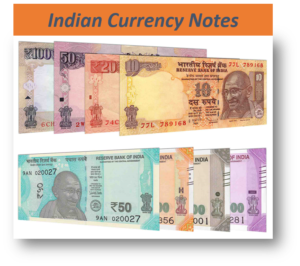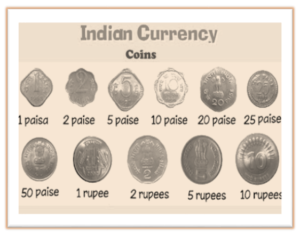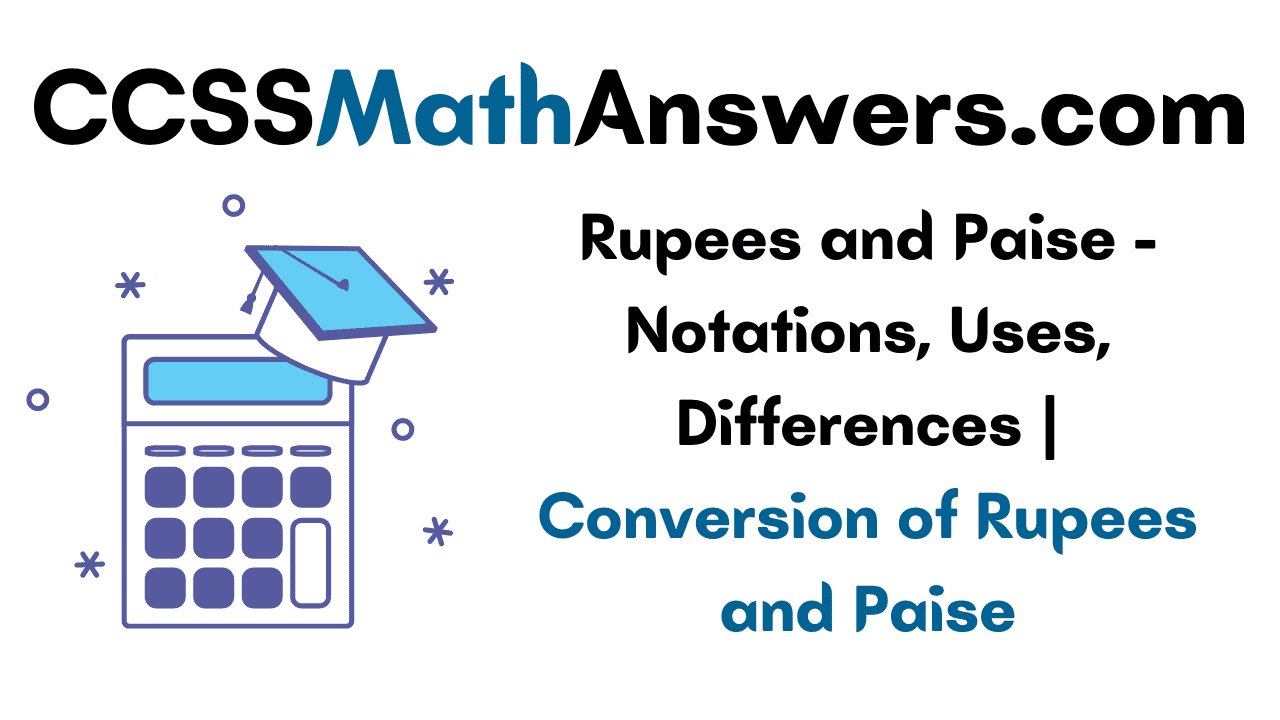Kids are not aware of money more than youth and adults. But, they should know the basic significance of money from the age of preschool. Money is used to buy things and is represented in rupees, paise, penny, dollars, etc. Parents and teachers have to give sufficient and needy information to the students about the value of money and the use of money.
Here, you can find the need and value of money, especially on Rupees and Paise in a fun way. The students can seek the details of rupees and paise from this guide. So, let’s get into this article & gain complete knowledge regarding Rupees and Paise.
Refer Related Articles:
How to Teach Rupees and Paise for Kids?
Money comprises rupees and paise. A rupee contains 100 paise which is equal to one rupee. Money is in two forms: one is in coins and the other is in notes. Coins are in metallic form and notes are in the form of paper as money, in ancient times coins are of gold and silver. Denomination of currency is the appropriate explanation of money. In the world, each country has a self-denominated currency.
Rupees and Paise are used to purchase things from various markets and shops. Rupees & paise are the official currency of India. In ancient days, most of the things were purchased in paises. As days passed by the prominence of paise is decreased and coins are disappeared from markets. Let’s see the representation of some rupee notes from the below image.
 Notation of Paise and Rupees
Notation of Paise and Rupees
The notation of rupees is Rs. and the notation of paise is P. But the notation of Indian rupee is changed from Rs. to ₹. We separate rupees and paise with dot “.”, for example, we denote one rupee fifty paise as Rs 1.50 or ₹ 1.50 or ₹ 1.5. Each country has self-designed notes and coins.
In India, the labeled coins are 1 paise, 2 paise, 5 paise, 10 paise, 20 paise, 25 paise, 50 paise, Rs 1, Rs 2, Rs 5, and Rs 10. The labeled notes are Rs 1, Rs 2, Rs 5, Rs 10, Rs 20, Rs 50, Rs 100, Rs 200, Rs 500, and Rs 2000. But, these days the labeled notes like Rs 1, Rs 2, Rs 5 are not in use. To recognize the notes and their value those are written in the notes as words of currency.
For example, to write the currency in paise as 50 paise and the rupees in 10 rupees. In the form of notation, we write as Rs 10 and 50 P. We denote 40 rupees 15 paise as Rs 40.15. Let’s have a look at the Indian Currency coins image below for clear recognization.

What are the Uses of Rupees & Paise?
There are some points why we use rupees are listed below:
- We have some needs and wants which we buy with rupees.
- We want money to purchase ours fulfills.
- Also, we can take advantage of coins in a fun way like coins are used in minute games, and in many national competitions, the coin is utilized to decide the start of a game.
- Saving the money is important, once we spend it won’t get it back.
- In mathematics, rupees and paise are used to solve problems. So, knowing the difference between rupees and paise for students in primary schools are a must.
How to Convert Paise into Rupees?
As we know, 1 rupee has 100 paise and see how many paises make a rupee by the conversions given in the below table:
| 2 × 50 paise = 100 paise = 1 rupee 4 × 25 paise = 100 paise = 1 rupee 5 × 20 paise = 100 paise = 1 rupee 10 × 10 paise = 100 paise = 1 rupee |
For example: Find the value of the rupee from the given paises 5 P, 25 P, 75 P, 20 P, 50 P, and 40 P.
To find the amount of rupee just add the given paises.
5 P + 25 P + 75 P + 20 P + 50 P + 40 P = 215 paise.
As we know 1 rupee = 100 paise. Then 215 paise = 2 rupees 15 paise.
Do Check:
List of Paise and Rupees Coins, Notes
Let’s see the Rupees and Paise as a list in the form of coins and notes.
| Paise Coins | Rupee Coins | Rupee Notes |
| 5 paise
10 paise 20 paise 25 paise 50 paise |
1 rupee
2 rupees 5 rupees 10 rupees |
1 rupee
2 rupees 5 rupees 10 rupees 20 rupees 50 rupees 100 rupees 200 rupees 500 rupees 2000 rupees |
As above listed, the notes of one rupee, two rupees, five rupee notes are fastly vanishing from markets.
FAQs on Rupees and Paise for Preschoolers
1. What are rupee and paise?
A rupee is an Indian currency either in coins or note forms. A paise is 1⁄100th of a rupee and the coins below one rupee are paise and above or equal to one rupee also known as rupee coins.
2. How do we denote rupee and paise & what is used to separate them?
To denote rupees, we use Rs. or ₹ and for paise, P. To separate the paise and rupees we use the symbol dot (.) and the left side numbers of the dot are rupees and the right side numbers of the dot are paise.
3. In rupees and paise which is greater?
As we knew decimal part is a smaller value. We convert paise into rupees. So, paise is a smaller value and the rupee is a larger value.
4. How many 50 paises are there in one rupee?
We perceive 100 paises = 1 rupee. So, there are two 50 paises in a rupee, and we call 50 paise as half of the rupee.
